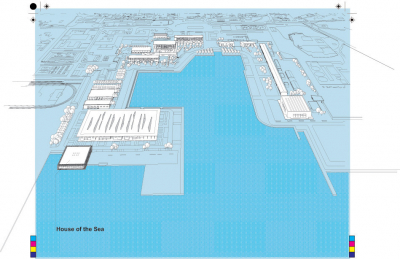House of the Sea, Ex Arsenal at La Maddalena Island
Part of the 155.000 sqm recovery and restructuring project aimed at creating a public and mixed use complex surrounding the harbor of the ex military Arsenale at La Maddalena. The House of the Sea is a glass and basalt prism that cantilevers over the water. Almost 2000 sqm, this new construction hosts a large event and conference hall suspended 6 meters above water that looks out towards the extraordinary panorama of the Gallura. A dislocated geometry, put in evidence by the structural feat (a combined concrete and steel system) and the modular bee-hive like façade made of opaline glass characterize the new landmark that reinterprets, in contemporary key, the relation between the power of the surrounding natural elements of landscape and the rigorous forms of Italy s traditional military architecture. Together with the Sea Arcades and the Hotel complex, the House of the Sea is plausibly on one of the most representative of the interventions that form part of the larger development plan aimed at transforming La Maddalena into a point of sustainable touristic rebirth and economic development of an area long marked by its military stigma.Destined to host the 2009 G8 International Summit (which was finally moved to L Aquila, central Italy, two months before the opening), the complex have been conceived from the beginning like a kind of architecture capable to perform a sort of double life: one, temporary, for the celebration of the 3 days event and one, permanent, for the trasformation of the old harbour in a modern and dynamic maritime pole.
From the onset the project was inspired more by the military architecture present on the archipelago than by the need to celebrate and pay homage to an international event that seems, to say the least, anachronistic. It took its sense of active visibility and of camouflage from the existing coast protection buildings and watch towers widely present in the archipelago and is, in this way, able to reverse the constructive logic of the ex military base an architecture historically built around inward-looking and a-topical architectures that is imagined instead as a place where architecture presents a choice of views and landscapes while being simultaneously transparent, visible and permeable to the gazes of others.
The House on the Sea was created from the need to compel the world s leaders to past the islands of the archipelago; a gaze linked to a sense of polyphony and relativism that would have also put them in a position of being exposed, even if through the filter of a glass membrane that e captures the chromatic variations from the sea and the sky and reinvents -without hiding it- the floating box dedicated to the Great Ritual.Finally the architectural forms of the ex base have a different tectonic outlooks because each one has a singular relationship both with the landscape of the archipelago, and with those visual forms of geo-politics which have been fixed amongst the rocks of those islands over the centuries.

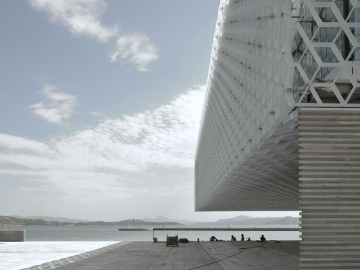
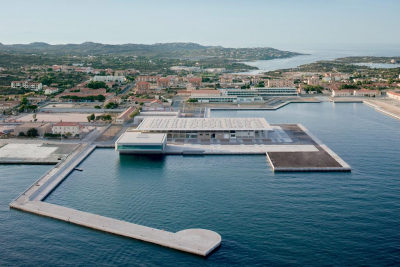
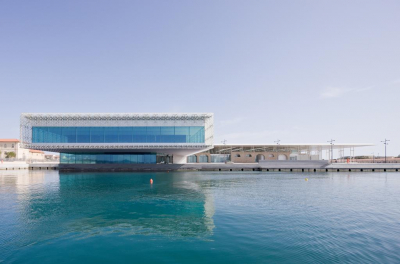
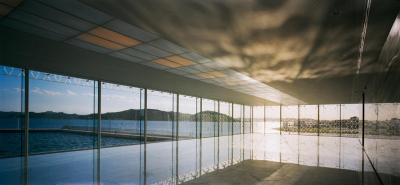
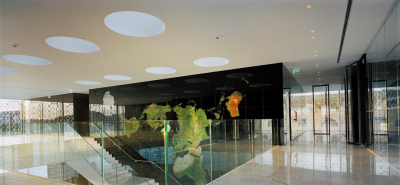
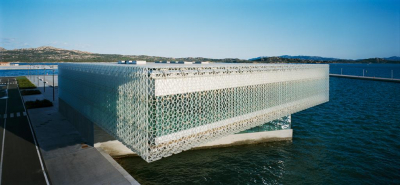
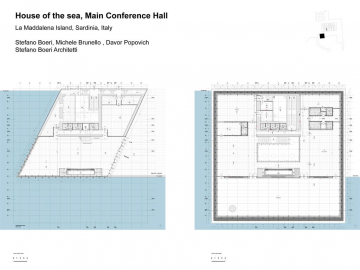
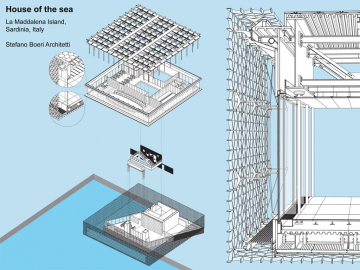
 copy.jpg)
 copy.jpg)
